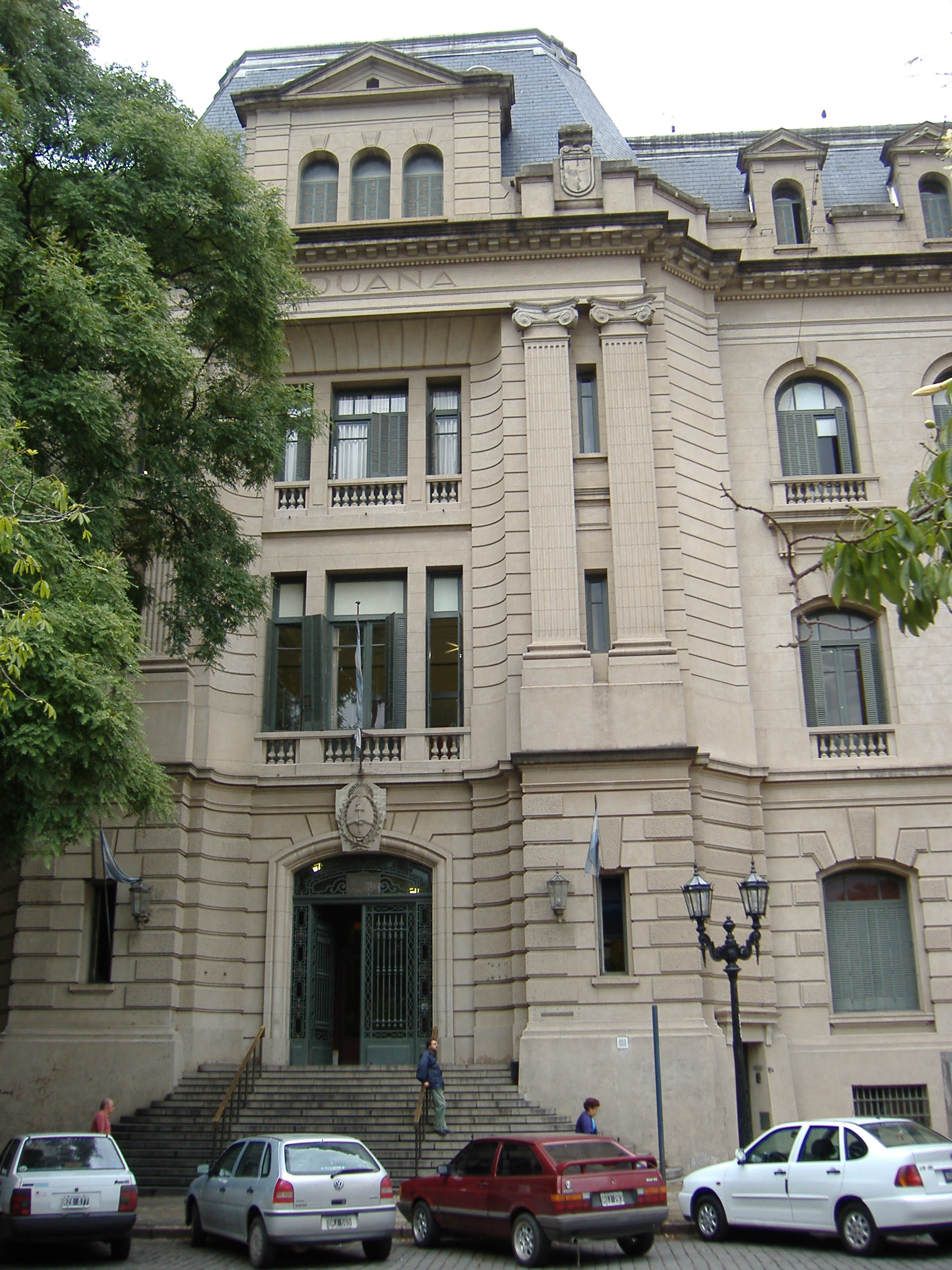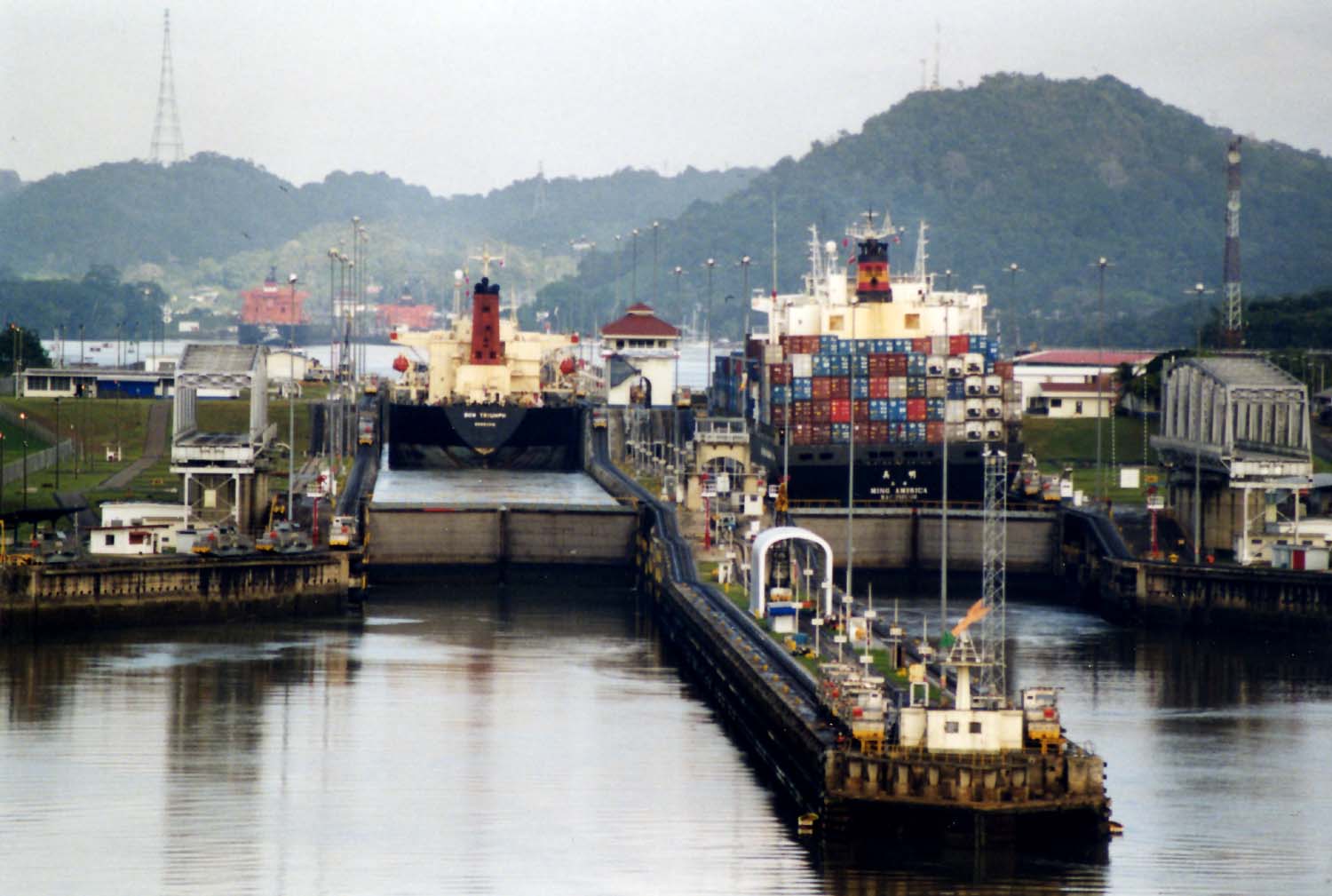|
Port Of Rosario
The Port of Rosario is an inland port and a major goods-shipping center of Argentina, located in the city of Rosario, province of Santa Fe, on the western shore of the Paraná River, about 550 km upstream from the Atlantic Ocean. Overview The port is the largest of a series located in the several cities of the Greater Rosario that lie on the Paraná; the last (northernmost) able of overseas traffic being Puerto General San Martín (23 km upstream from Rosario). It is part of the Bi-Oceanic Corridor that joins the Atlantic with the Pacific Ocean via Buenos Aires, Rosario, Córdoba, the Cuyo region and Valparaíso, Chile; going north–south it forms the axis of the Paraguay-Paraná waterway. It directly services the area of Santa Fe that produces a large part of Argentine exports, and indirectly the whole Mercosur trade bloc. In 2003 the traffic in the port amounted to 2.9 million tonnes. At this point of the course of the Paraná (Kilometer 420) lies the depth tr ... [...More Info...] [...Related Items...] OR: [Wikipedia] [Google] [Baidu] |
Mercosur
The Southern Common Market (commonly known by abbreviation ''Mercosur'' in Spanish and ''Mercosul'' in Portuguese) is a South American trade bloc established by the Treaty of Asunción in 1991 and Protocol of Ouro Preto in 1994. Its full members are Argentina, Bolivia, Brazil, Paraguay, and Uruguay. Venezuela is a full member but has been suspended since 1 December 2016. Chile, Colombia, Ecuador, Guyana, Panama, Peru, and Suriname are associate countries. Mercosur's origins are linked to the discussions for the constitution of a regional economic market for Latin America, which go back to the treaty that established the Latin American Free Trade Association in 1960, which was succeeded by the Latin American Integration Association in the 1980s. At the time, Argentina and Brazil made progress in the matter, signing the Iguaçu Declaration (1985), which established a bilateral commission, which was followed by a series of trade agreements the following year. The Integration, ... [...More Info...] [...Related Items...] OR: [Wikipedia] [Google] [Baidu] |
Rosario International Airport
Rosario () is the largest city in the central provinces of Argentina, Argentine province of Santa Fe Province, Santa Fe. The city, located northwest of Buenos Aires on the west bank of the Paraná River, is the third-most populous city in the country after Buenos Aires and Cordoba. With a growing and important metropolitan area, Greater Rosario has an estimated population of 1,750,000 . One of its main attractions includes the neoclassical architecture, neoclassical, Art Nouveau, and Art Deco architecture that has been preserved in hundreds of residences, houses and public buildings. The city is also famous for being the birthplace of the Argentine footballer Lionel Messi. Rosario is the head city of the Rosario Department and is located at the heart of the major industrial corridor in Argentina. The city is a major rail transport, railroad terminal and the shipping center for north-eastern Argentina. Ships reach the city via the Paraná River, which allows the existence of a ... [...More Info...] [...Related Items...] OR: [Wikipedia] [Google] [Baidu] |
Entre Ríos Province
Entre Ríos (, "Between Rivers") is a Center Region, Argentina, central provinces of Argentina, province of Argentina, located in the Mesopotamia, Argentina, Mesopotamia region. It borders the provinces of Buenos Aires Province, Buenos Aires (south), Corrientes Province, Corrientes (north) and Santa Fe Province, Santa Fe (west), and Uruguay in the east. Its capital is Paraná, Entre Ríos, Paraná (391,000 inhabitants), which lies on the Paraná River, opposite the city of Santa Fe, Argentina, Santa Fe. Together with Córdoba Province, Argentina, Córdoba and Santa Fe Province, Santa Fe, since 1999, the province is part of the economic-political association known as the Center Region, Argentina, Center Region. History The first inhabitants of the area that is now Entre Ríos were the Charrúa and Chaná people, Chaná who each occupied separate parts of the region. Spaniards entered in 1520, when Juan Rodríguez Serrano ventured up the Uruguay River searching for the Pacific ... [...More Info...] [...Related Items...] OR: [Wikipedia] [Google] [Baidu] |
Rosario-Victoria Bridge
Rosario-Victoria Bridge (in Spanish, ''Puente Rosario-Victoria'') is the informal name of the physical connection between the Argentine cities of Rosario (province of Santa Fe) and Victoria (province of Entre Ríos). This roadlink is composed of several bridges, viaducts and earth-filled sections. It crosses the main course of the Paraná River and touches down on several islands of the Paraná Delta in the way. Works on the project began in 1998, but they were repeatedly interrupted due to lack of continued funding from the national and the provincial state, especially in the worst part of the Argentine economic crisis of 2001. Public transit access to the bridge was opened on May 22, 2003. The link between the two cities spans a total of . The total length of the various bridges and their viaducts is . The main bridge is long, with central cable-stayed span of . Among the materials used were about 250,000 cubic meters (326,987 yd³) of concrete, 63,000 tons of ADN- ... [...More Info...] [...Related Items...] OR: [Wikipedia] [Google] [Baidu] |
Córdoba, Argentina
Córdoba () is a city in central Argentina, in the foothills of the Punilla Valley, Sierras Chicas on the Primero River, Suquía River, about northwest of Buenos Aires. It is the capital of Córdoba Province, Argentina, Córdoba Province and the List of cities in Argentina by population, second-most populous city in Argentina after Buenos Aires, with about 1.6 million urban inhabitants . Córdoba was founded as a settlement on 6 July 1573 by Spanish Empire, Spanish conquistador Jerónimo Luis de Cabrera, who named it after the Spanish city of Córdoba, Spain, Córdoba. It was one of the early Spanish colonial capitals of the region of present-day Argentina (the oldest Argentine city is Santiago del Estero, founded in 1553). The National University of Córdoba, the oldest university of the country, was founded in 1613 by the Society of Jesus, Jesuit Order, and Córdoba has earned the nickname ("the learned"). Córdoba has many historical monuments preserved from the period ... [...More Info...] [...Related Items...] OR: [Wikipedia] [Google] [Baidu] |
Nuevo Central Argentino
Nuevo Central Argentino S. A. (abbreviated NCA) is an Argentine company that utilises the operation and infrastructure of the national railway system of the former Mitre Railway division of Ferrocarriles Argentinos, by a concession granted on 23 December 1992 as part of railway privatisation carried out during the presidency of Carlos Menem. NCA operates about 5,000 km of cargo railroad lines in the provinces of Buenos Aires, Santa Fe, Córdoba, Santiago del Estero and Tucumán. Its headquarters are located in Rosario (province of Santa Fe); its warehouses are located in Rosario, in nearby Villa Gobernador Gálvez, and in Villa María (province of Córdoba). There are also operational centers in Colombres and Córdoba City, and transfer ( truck changing?) centers in the city of Tucumán and in Retiro, Buenos Aires. NCA, which is owned by Aceitera General Deheza S.A., [...More Info...] [...Related Items...] OR: [Wikipedia] [Google] [Baidu] |
Rail Transport
Rail transport (also known as train transport) is a means of transport using wheeled vehicles running in railway track, tracks, which usually consist of two parallel steel railway track, rails. Rail transport is one of the two primary means of land transport, next to road transport. It is used for about 8% of passenger and rail freight transport, freight transport globally, thanks to its Energy efficiency in transport, energy efficiency and potentially high-speed rail, high speed.Rolling stock on rails generally encounters lower friction, frictional resistance than rubber-tyred road vehicles, allowing rail cars to be coupled into longer trains. Power is usually provided by Diesel locomotive, diesel or Electric locomotive, electric locomotives. While railway transport is capital intensity, capital-intensive and less flexible than road transport, it can carry heavy loads of passengers and cargo with greater energy efficiency and safety. Precursors of railways driven by human or an ... [...More Info...] [...Related Items...] OR: [Wikipedia] [Google] [Baidu] |
Cargo
In transportation, cargo refers to goods transported by land, water or air, while freight refers to its conveyance. In economics, freight refers to goods transported at a freight rate for commercial gain. The term cargo is also used in case of goods in the cold-chain, because the perishable inventory is always in transit towards a final end-use, even when it is held in cold storage or other similar climate-controlled facilities, including warehouses. Multi-modal container units, designed as reusable carriers to facilitate unit load handling of the goods contained, are also referred to as cargo, especially by shipping lines and logistics operators. When empty containers are shipped each unit is documented as a cargo and when goods are stored within, the contents are termed containerized cargo. Similarly, aircraft ULD boxes are also documented as cargo, with an associated packing list of the items contained within. Description Marine Seaport terminals handle a wide ra ... [...More Info...] [...Related Items...] OR: [Wikipedia] [Google] [Baidu] |
Panamax
Panamax and New Panamax (or Neopanamax) are terms for the size limits for ships traveling through the Panama Canal. The limits and requirements are published by the Panama Canal Authority (ACP) in a publication titled "Vessel Requirements". These requirements also describe topics like exceptional dry seasonal limits, propulsion, communications, and detailed ship design. The allowable size is limited by the width and length of the available lock chambers, by the depth of water in the canal, and by the height of the Bridge of the Americas since that bridge's construction, along with the clearance under the Atlantic and Centennial Bridges since their constructions in 2019 and 2004 respectively. These dimensions give clear parameters for ships destined to traverse the Panama Canal and have influenced the design of cargo ships, naval vessels, and passenger ships. Panamax specifications have been in effect since the opening of the canal in 1914. In 2009, the ACP published the ... [...More Info...] [...Related Items...] OR: [Wikipedia] [Google] [Baidu] |
Dredge
Dredging is the excavation of material from a water environment. Possible reasons for dredging include improving existing water features; reshaping land and water features to alter drainage, navigability, and commercial use; constructing dams, dikes, and other controls for streams and shorelines; and recovering valuable mineral deposits or marine life having commercial value. In all but a few situations the excavation is undertaken by a specialist floating plant, known as a dredger. Usually the main objectives of dredging is to recover material of value, or to create a greater depth of water. Dredging systems can either be shore-based, brought to a location based on barges, or built into purpose-built vessels. Dredging can have environmental impacts: it can disturb marine sediments, creating dredge plumes which can lead to both short- and long-term water pollution, damage or destroy seabed ecosystems, and release legacy human-sourced toxins captured in the sediment. ... [...More Info...] [...Related Items...] OR: [Wikipedia] [Google] [Baidu] |





